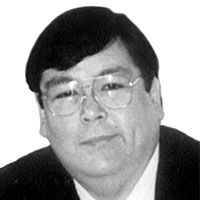The most traumatic Valentine’s Day Filipinos ever had

While most Filipinos will be focused today on their usual Valentine’s Day activities and “rituals†— it’s my intention to remember the most traumatic Valentine’s Day Filipinos had ever experienced. This is the Valentine’s Day during the month-long brutal 1945 Battle for Manila where over 100,000 Filipino civilians became casualties of war. We should never forget them.
It was 68 years ago when the February 3 to March 3 Battle for Manila was fought between US and Japanese forces. After Warsaw, Manila was considered the most devastated city during World War II.
In the 1945 Battle for Manila, Filipinos saw the Americans as the liberating forces while the Japanese were considered as the ruthless and cruel invaders. However, per the most accurate historical accounts, US shelling inflicted more civilian deaths than the Japanese atrocities during the Battle for Manila.
From the US military point of view, the shelling of a city where there were over 100,000 civilians caught in the middle of no man’s land was justified. Gen. Douglas MacArthur opted to use his artillery in order to save the lives of US soldiers. The war was far from over and MacArthur couldn’t afford to incur too many casualties. He was anticipating that the Allied forces could be facing the biggest bloodletting of the Pacific War — the invasion of Japan.
Many blamed the Japanese for opting to defend Manila but then one must also consider that from the Japanese military standpoint, delaying MacArthur’s Luzon advance in Manila gave Gen. Tomoyuki Yamashita more time to consolidate Japanese forces in Northern Luzon. It was in Northern Luzon where Gen. Yamashita, also known as the Tiger of Malaya, planned to make his last stand against MacArthur.
For our family, Valentine’s Day carried this special meaning. It was on Valentine’s Day during the 1945 Battle for Manila when our Scottish grandfather, Ian Trotter-Macgregor, was killed and became one of the over 100,000 civilians who perished.
We grew up physically missing our grandfather Ian. However that didn’t prevent us from knowing many good things about him and we learned to admire him. This cognizance of the qualities of a grandfather we had never met happened because Mommy and our granny never tired of telling us about him and what a wonderful human being he was. We have to admire our Dad too for not feeling envy or insecurity over the way Mommy admired and wanted to perpetuate the memory of grandfather Ian.
Ian came to our country at the turn of the 20th century. He was no different from many other Scots who have searched for adventure all over the world, many of them making historical imprints. Ian was born to upper class parents as could be gleaned from the records of Scotland’s archives. Their registry papers showed that they had lived in a big house with 12 rooms and had at one point 10 domestic helpers living with them. Kincraig House, near Garguston, where they lived for a while and where Ian grew up, is now a small hotel.
If they were Filipinos, nobody in the Macgregor brood would probably have left home. But they were Scots and couldn’t resist the Scottish itch for adventure. Ian’s elder brother, Robert, went to South Africa and established his family there. Ian chose Manila, then called the Pearl of the Orient, and also established his family here. His Trotter cousins went to New Zealand and made significant contributions to their new country. They’ve produced the late industrialist Sir Ronald Trotter and Rugby Union’s iconic hero, Richie McCaw. Richie’s great, great grandfather, Robert Trotter, was the brother of our great grandmother Annie Trotter-Macgregor.
Connected with the Scottish railroad — it was logical for Ian to come here under contract for a railroad project, the building of the railway link between Manila and Legaspi in Bicol. After the project was successfully finished, they held a big party in Legaspi and it was there that Ian saw, met and immediately fell in love with our granny, Leoncia Cipriano. Mommy was their only surviving offspring. Mom had an elder sister, Salvacion, but she died at childbirth.
After completing the railroad project, Ian joined the Smith Bell Company — then one of the biggest marketing firms in the country. He later joined the pioneers of Philippine Packing Corporation in establishing the Del Monte pineapple plantation in Bukidnon. Ian was a champion golfer and won the back-to-back Philippine Open title in 1919 and 1920. In the 1930s, he opted to acquire Filipino citizenship.
Mommy never ceased to cite Ian’s exemplary character, especially to me for being the eldest and expected “torch bearer†of the Macgregor standard over here. Ian to me was the fine Scottish gentleman, who would conceal pain when he experienced it, was thoroughly honest, paid little attention to frivolous worldly pleasures and treated everyone fairly. Equal treatment for Filipinos was something that was very rare from an expat in those colonial days.
Today, our family joins the relatives of the over 100,000 civilian casualties of the 1945 Battle for Manila in remembering their loved ones — collateral damage to the strategies of two warriors of World War II.
* * *
Shakespeare: “Madness in great ones must not unwatched go.â€
E-mail: [email protected] and website: www.chairwrecker.com
- Latest
- Trending

























